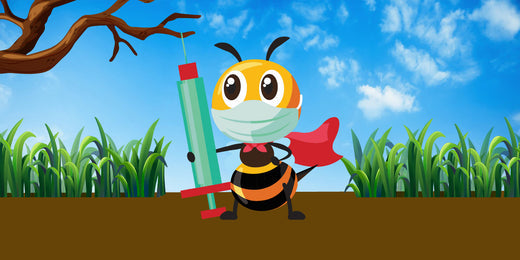
World’s First Honeybee Vaccine
Honeybees, those essential pollinators responsible for one-third of the world's food supply, have been facing a relentless battle against diseases threatening their colonies. American foulbrood disease, caused by the bacterium Paenibacillus larvae, has been a particularly formidable adversary. But now, there's a ray of hope in the form of the world's first honeybee vaccine.
A Game-Changer for Honeybee Health
In a significant development, the US government has granted provisional approval for the use of a groundbreaking honeybee vaccine. This milestone has raised hopes for combatting the diseases that regularly devastate honeybee colonies, with potentially far-reaching consequences for global food pollination.
Developed by Dalan Animal Health, a US biotech company, this innovative vaccine aims to shield honeybees from the destructive clutches of American foulbrood disease. The disease, which weakens and annihilates colonies, has long plagued beekeepers. Until now, their only recourse has been eliminating infected colonies and administering antibiotics to curb its spread. The battle against foulbrood has been a constant struggle with no available cure.
The Vaccine in Action
So, how does this groundbreaking vaccine work its magic? To understand that, we need to explore the fascinating process behind it.
The vaccine's effectiveness hinges on a rather ingenious method: incorporating some of the Paenibacillus larvae bacteria into royal jelly. Royal jelly is a special substance fed to queen bees by worker bees. When the queen consumes this jelly, she inadvertently ingests some of the vaccine, which then makes its way into her ovaries. This is where the magic happens.
As the queen continues to lay eggs, the developing bee larvae inherit their immunity from foulbrood. This immunity, a result of Dalan's extensive research, offers a promising avenue for reducing the mortality rate caused by the disease. In essence, the vaccine equips future generations of honeybees with the tools they need to fend off foulbrood, potentially leading to healthier and more resilient colonies.
The Plight of Honeybees
Honeybees, as vital pollinators, play a critical role in our food supply chain. However, their exposure to diseases has significantly increased due to factors like commercialization, transportation, and their use in agriculture. These diseases can wreak havoc on bee populations, necessitating substantial intervention by beekeepers to sustain colony numbers.
American foulbrood disease is just one of the many challenges honeybees face. Others, such as Varroa mites, habitat loss, and exposure to pesticides, compound the threats to bee health. The introduction of the honeybee vaccine represents a major step forward in addressing these issues and safeguarding the future of bee populations.
The world's first honeybee vaccine represents a beacon of hope in the challenging journey to protect these vital pollinators. As American foulbrood disease and other threats continue to test the resilience of honeybee colonies, this innovative solution offers a glimmer of optimism.
By equipping honeybee larvae with immunity to foulbrood, the vaccine opens the door to healthier and more robust bee populations. This, in turn, strengthens our global food security and ecosystem stability.
While the journey to combat honeybee diseases is far from over, the honeybee vaccine stands as a testament to human ingenuity and our commitment to preserving the natural world. As we look ahead, let's celebrate this milestone and continue our collective efforts to safeguard the invaluable contributions of honeybees to our planet.



Leave a comment